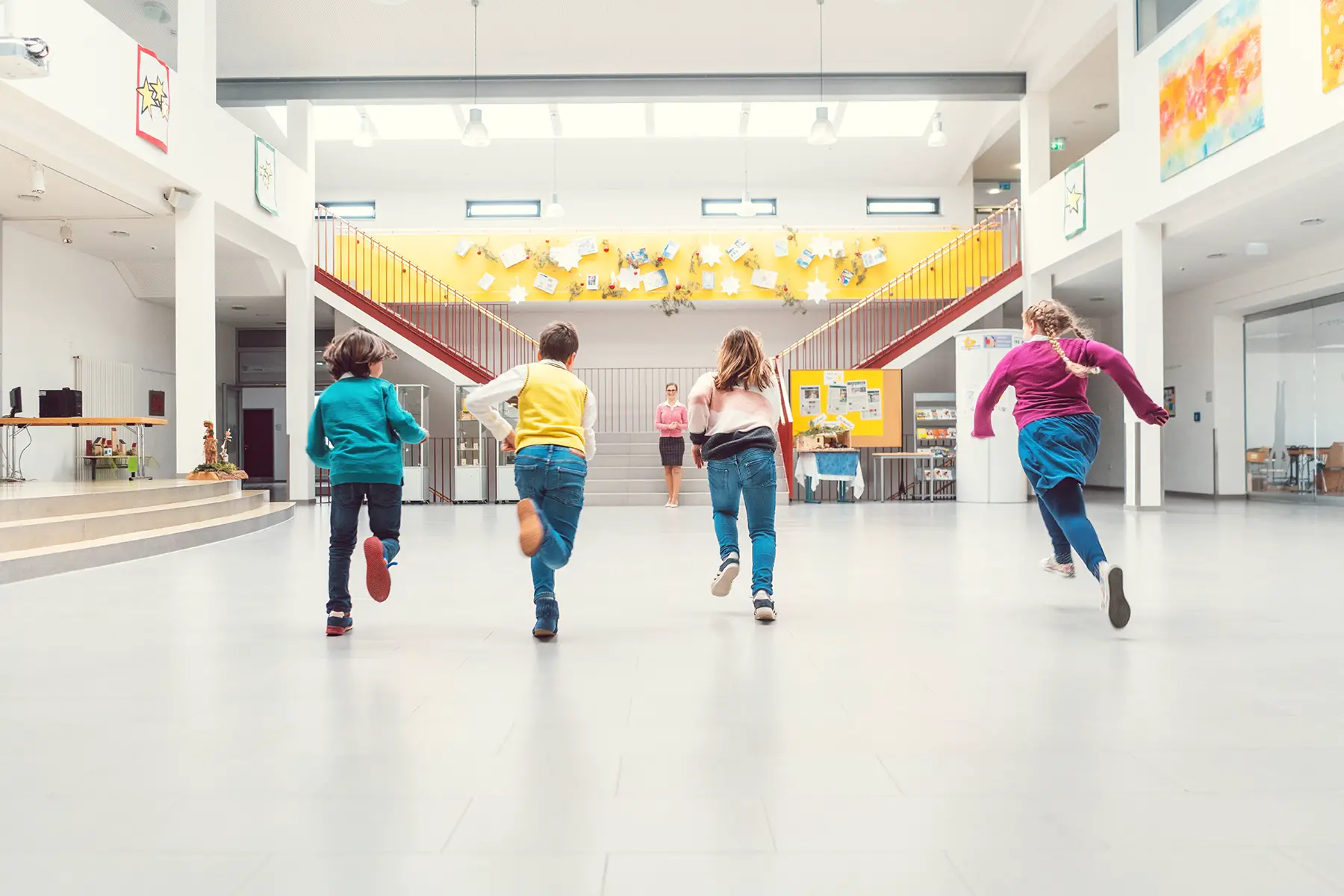Secondary schools in Germany include a range of different state, state-subsidized, and fully private institutions that vary across the 16 German states (Länden). If you are unfamiliar with the German education system, the wealth of options can seem confusing at first. This guide will help you navigate your way through the complexities. Sections include:
The secondary education system in Germany
Children attend secondary school (Weiterführende Schule) in Germany from the age of 10 (grade 5), apart from in the states of Berlin and Brandenburg where it begins at the age of 12 (grade 7). Full-time secondary education is compulsory until the age of 15 (sekundarstufe I). After this, students continue at school either full-time or part-time until they are 18 (sekundarstufe II).
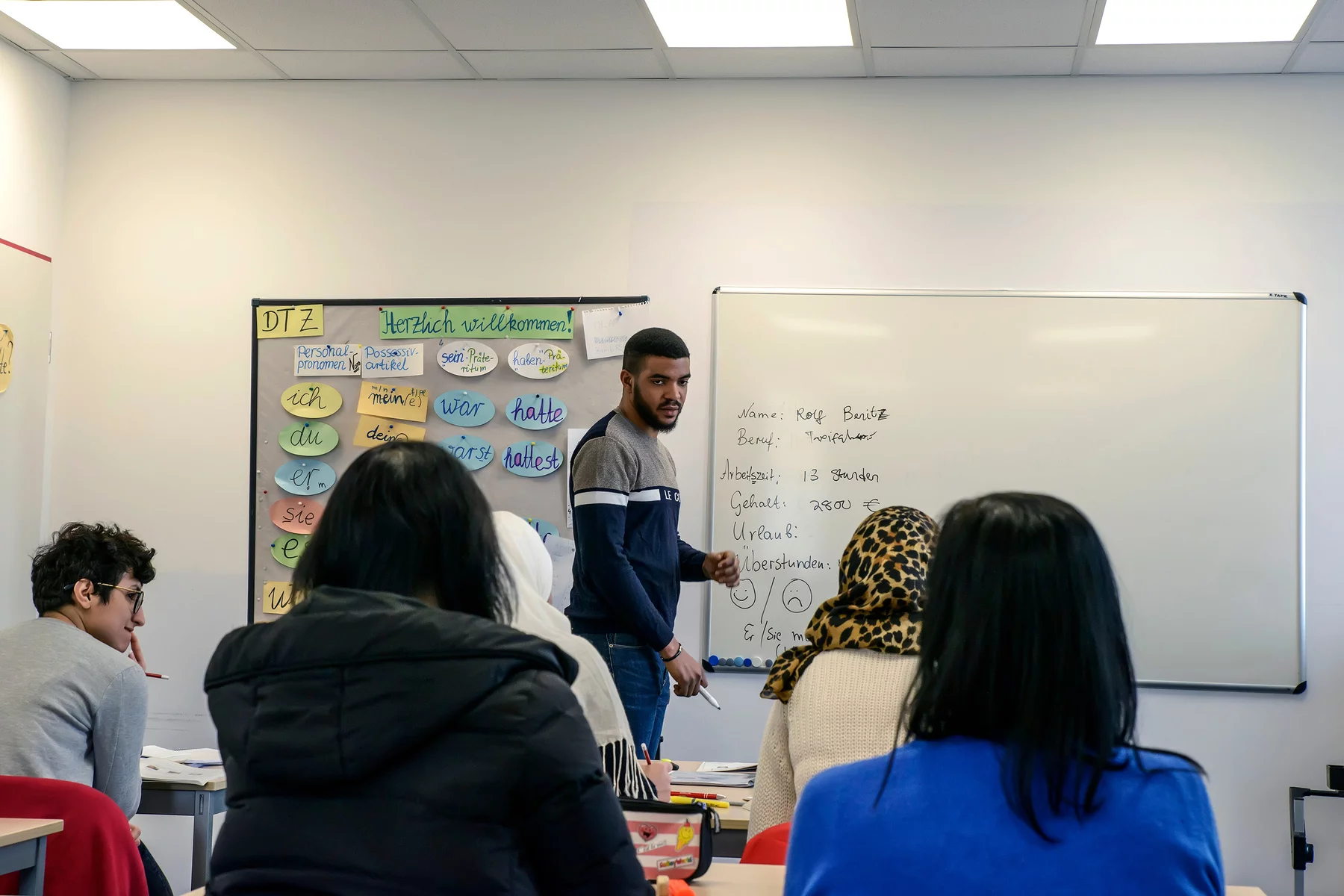
You can find a mixture of state, state-subsidized private and fully private schools in Germany. State schools include a number of different types. Private options include international schools and method schools. Which school your child will attend depends on your own preferences as well as recommendations from the child’s primary school.
At the end of their secondary education, students in Germany either take exams to get them into university (e.g. Abitur or International Baccalaureate) or work towards vocational diplomas.
State secondary schools in Germany
Over 90% of students attend state schools in Germany, where education is free. There are also a number of state-subsidized schools such as religious schools and method schools that receive funding per student and charge parents a relatively low fee.
The standard of state secondary schooling in Germany is high. The country ranks 12th globally in science and 16th in reading and mathematics according to the 2018 OECD/PISA educational study of 15-year-olds. However, there are large inequalities between the highest and lowest-performing students.
Types of state secondary schools in Germany
According to official statistics, there are 8,967 state secondary schools in Germany providing sekundarstufe I education as of 2020. These break down into the following types of school:
- Gymnasium – this is the German grammar school for high-performing students who typically study full-time until 18 and take the Abitur exam to get into German university. 3,141 schools in total.
- Realschule – intermediate school for middle-performing students who will study until 16 and then usually either transfer to Gymnasium or continue for a vocational diploma. 1,781 schools.
- Hauptschule – general secondary school for less academic students lasting until the age of 15. Students can then do an extra full year for the Realschule diploma or switch to part-time vocation-based education. 1,915 schools.
- Gesamtschule – integrated comprehensive school combining Realschule and Hauptschule. These are becoming more common in today’s German education system. In some states they might be called Mittelschule, Regelschule or Regionalschule. 2,130 schools.
In addition to this, there are 8,534 vocational schools (Berufsschule) providing sekundarstufe II education for students aged 15-18. These are mostly aimed at students from Realschulen, Hauptschulen, and Gesamtschulen who will continue either full-time vocational learning or dual vocational training (part-time study combined with an apprenticeship).

The curriculum in state secondary schools in Germany
Secondary schools in Germany vary according to both school type and local German state. Most schools consist of between 30–35 hours per week of classroom time plus homework. The school year typically runs from mid-August/early September to the end of June/the start of July.
School holidays include:
- Autumn break (Herbstferien) of 1–2 weeks
- Christmas break (Weihnachtsferien) of 2–3 weeks
- Easter break (Osterferien) of 2–3 weeks
- Summer break of around six weeks
There are also various public and religious holidays that vary across the states, plus some states have an additional 1–2 week break in February.
The curriculum also varies but will typically include German, mathematics, and a foreign language in all schools. Additionally, there will usually be natural sciences (biology, chemistry, and physics), computer science, social sciences (geography, history, politics, and economics), philosophy/religious studies, arts, music, and physical education (PE).
Gymnasium students will study German, mathematics, and a foreign language in their last two Abitur preparation years, plus additional chosen subjects from the curriculum. Those who do their sekundarstufe II at a Berefsschule will typically take lessons in their chosen vocational field (for example, engineering, healthcare, or business) plus German, social studies, and a foreign language. They will usually combine their studies with two or three days a week at an apprenticeship (Ausbildungsplatz).
After-school activities vary between schools but may consist of sports clubs, arts/cultural activities, or additional learning. Some activities may involve fees.
Pros and cons of state schools in Germany
There are both advantages and drawbacks to sending your child to a state secondary school in Germany if you’re an expat. Benefits include:
- Education is free, so is a good cost-effective option if your child has a grasp of the German language.
- The quality of state education in Germany is high, plus you have freedom to choose a secondary school so can find one with a good reputation.
- It will assist with your child’s integration into German culture and society.
However, drawbacks include:
- State secondary education in Germany is streamed according to ability. Therefore if your child isn’t fluent in German, they may struggle to get a place at the top Gymnasium schools.
- There are generally fewer extra-curricular activities and opportunities than in most private secondary schools.
- Most state schools typically do not have the global academic and business networks that many international private schools enjoy.
Applying to secondary state schools in Germany
Enrolment to state secondary schools in Germany is usually done through primary school. Which school you enroll your child in is based on academic assessments, teacher recommendations, and parental preferences.
Gymnasiums and some Realschulen have entry requirements. Some may have limited placements. However, once you know which school type your child qualifies for, you are free to choose a state school in your area. In some states, students can have trial lessons before signing up to a school.
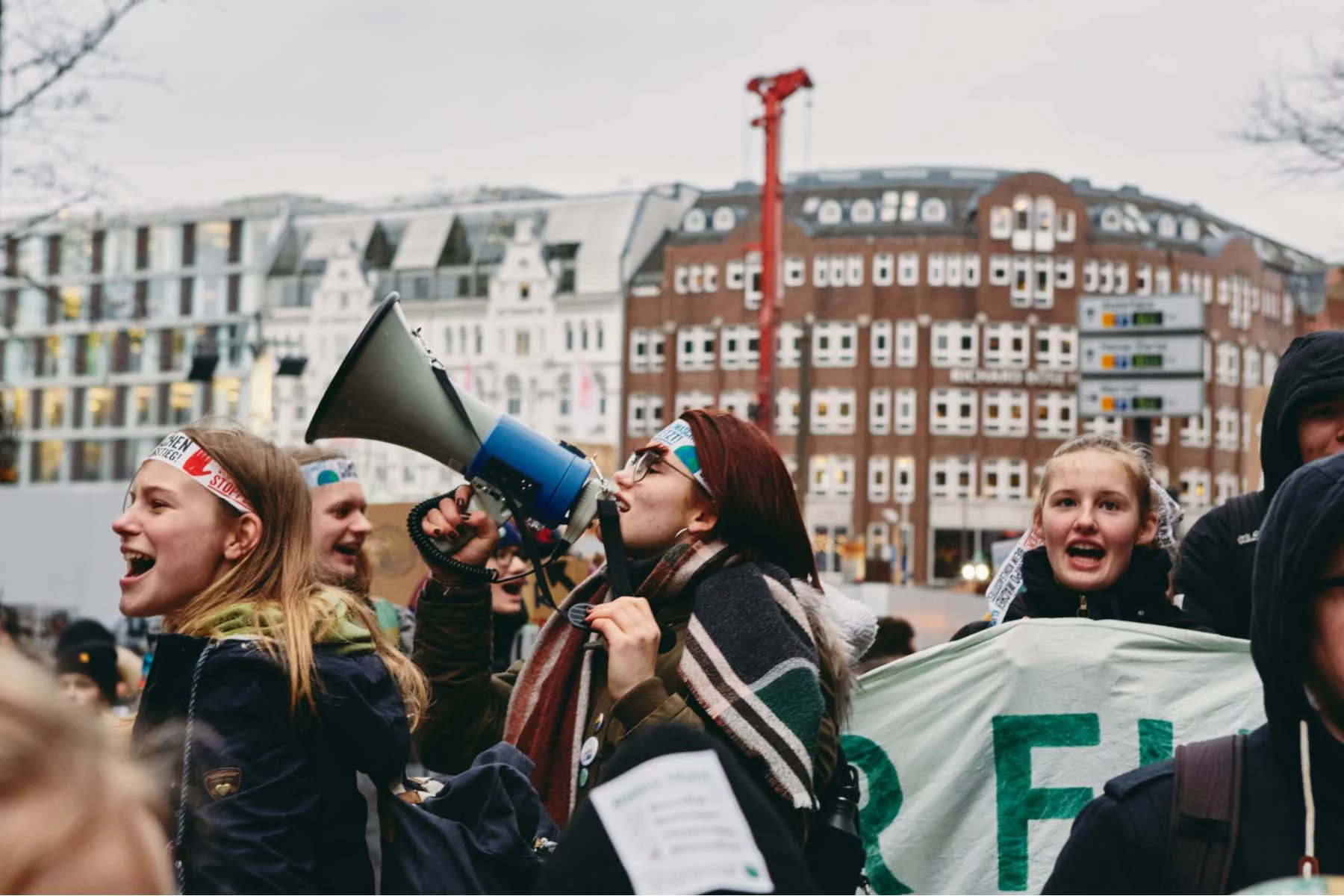
Students stay on at primary school for two extra years in Berlin and Brandenburg to prepare them for secondary school and determine which type is best for them. In other states, the first two years are preparatory years and students may switch between school types, for example from Realschule to Gymnasium, if this is suitable.
You typically need to provide the child’s birth certificate, passport, and proof of residency as part of the enrolment process.
For entry onto a Berefsschule program, you typically need a Hauptschule diploma qualification as a minimum requirement. For some white-collar vocational studies, for example, banking or hotel management, you may need a Realschule diploma or equivalent. Additionally, some programs may require you to secure an apprenticeship offer from a business before offering a place.
Private secondary schools in Germany
Around 9% of secondary school students in Germany are privately educated. Private secondary schools in Germany consist of two basic types. These are:
- Substitute schools (ersatzschulen): these schools offer an equivalent education to state schools, with state-recognised qualifications. They have their own objectives and missions but must meet state approval. Schools can be state-subsidized or fully independent.
- Supplementary schools (ergänzungsschulen): these schools generally serve to complement the state sector by providing courses and education not found in state secondary schools. Most of these are vocational schools providing sekundarstufe II qualifications.
General private schools
These schools are usually state-subsidized and provide schooling and curricula very similar to state schools. They are mostly, but not exclusively, denominational schools (Catholic or Lutheran). The majority are day schools, although some may offer boarding options.
Although in receipt of state funding, these schools are run by private institutions such as churches or businesses and have a certain degree of autonomy. The state subsidizes around two-thirds of the costs of each child, with parents paying the remainder in annual fees. Because schools are part-funded, their fees are cheaper than fully private international schools.
Method schools
Also known as alternative schools, method schools provide an education based on different teaching philosophies than mainstream schools while still following a state-approved curriculum.
Method schools in Germany include 254 Waldorf Schools (Waldorfschulen) and around 270 Montessori schools. Most of these schools are state-subsidized and charge low fees based on parental income and agreed in advance.
Waldorf Schools are based on the teachings of Rudolf Steiner and center their learning around creativity and the arts. Most schools offer three stages of teaching – primary, lower secondary and upper secondary. In addition to art, music, drama, dance, gardening and mythology, students also learn mathematics, natural sciences, social sciences, and foreign languages.
Montessori schools are based on the constructivist child development approach of Maria Montessori. Typically, most of these schools offer mixed-age lessons up to grades 4-6. However, some schools also teach at secondary level. The curriculum is based around allowing children the space to discover and explore their own interests, although secondary school education is slightly more structured. Subjects include languages, mathematics, science, social studies and art.
Neither type of school offers formal qualifications as a matter of course. However, you can choose to study for a high school diploma or even the Abitur. Montessori students need to sit examinations at a nearby state school.
International schools in Germany
There are around 160 international schools in Germany that typically offer schooling from pre-school through to upper secondary. These schools are mostly fully private and are popular with expats due to their international environment and high educational standards.
Many of these schools are American or British schools so teach primarily in English. Some are bilingual schools that also teach in German. There are also numerous other European schools as well as schools from countries such as Japan. Most schools belong to a reputable body such as the Council of International Schools (CIS) or the Association of German International Schools (AGIS).
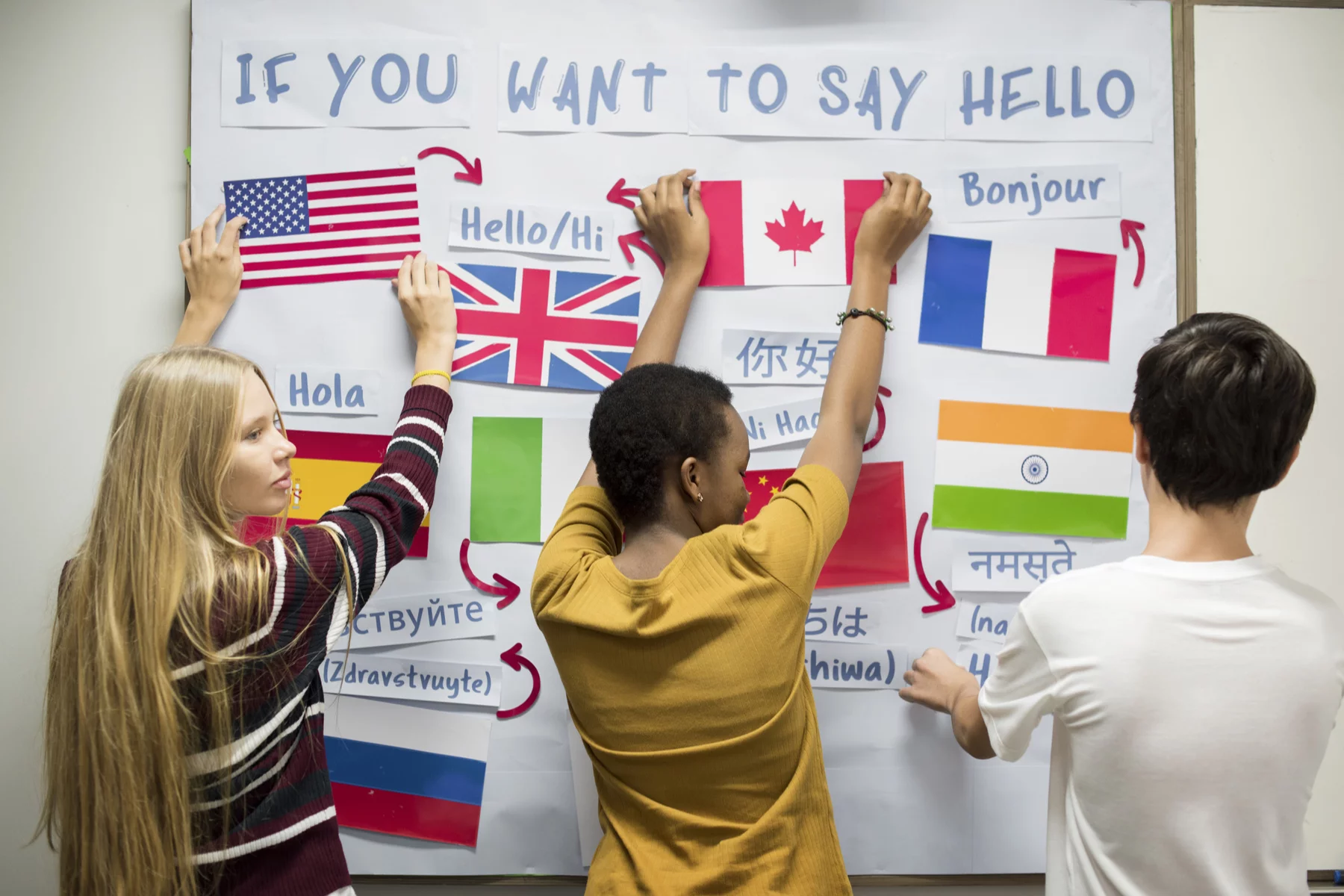
The curriculum in international schools is broadly similar to that in state schools. Students will typically learn full-time until the age of 18 and take a qualification such as the International Baccalaureate, the European Baccalaureate or the International GCSE. Costs are generally more expensive than other secondary schools, typically varying between around €14,000 and €20,000 a year. Some schools offer discounts or scholarships for families unable to afford full costs.
International schools often offer activities or projects especially appealing to expat families. For example, some international schools in Germany participate in the Eco-Schools program, the world’s largest school-based sustainability project. Munich International School gives students a hands-on environmental education in addition to traditional curriculum. This includes addressing global issues on a local scale with activities related to recycling, biodiversity, water conservation, and energy efficiency.
The competition to get into the best international schools in Germany can be strong, so it’s advisable to apply early (around 6-12 months before the start of the school year). Enrolment procedures vary from school to school.
Pros and cons of international schools in Germany
Benefits of sending your child to an international school in Germany include:
- Better continuity of education for children who come to Germany after having started school. They can continue learning a familiar curriculum in their first language.
- Smaller class sizes, so teachers can devote more time to each pupil.
- More extra-curricular activities.
- High quality of teaching with a chance to progress to qualifications such as IB or IGCSE.
- International learning environment with students coming from many countries.
- Higher costs. Most International schools get no state financial support so charge more in annual fees.
- Less integration into German culture and society. Children at international schools won’t learn primarily in the German language.
- Entry requirements. Some schools are over-subscribed so you typically have to apply earlier and meet stricter admissions criteria.
You can search for international schools in our business directory for Germany.
Graduating in Germany
German secondary school students sit examinations and receive formal qualifications at the end of their study. Gymnasium students, as well as many private students staying on for full-time sekundarstufe II, take the Abitur exams needed to get into university. Grades in each subject range from 1-15, with 13 and above being very good (sehr gut). Students need an overall average of at least 4 to apply to university.
Students at Realschulen, Hauptschulen, and Gesamtschulen receive a diploma (Abschluss) upon successfully completing schooling. Some schools include final graduation exams, others base assessment purely on coursework. These are awarded at the end of sekundarstufe I (grade 10, or grade 9 for Hauptschulen). Students who have completed at least grade 9 can choose to enroll for vocational study at a Berefsschule. Those who have completed grade 10 can choose between Berefsschule and Gymnasium.

Students at Berefsschulen receive a certificate of completion (Abschlusszeugnis der Berufsschule) plus they usually need to pass an exam in their chosen vocational field. If they are successful, they get an examination certificate (Prüfungszeugnis) meaning they are qualified to work in this field.
International Baccalaureate in Germany
Some schools, particularly private international schools, offer equivalent alternative qualifications to the Abitur. These include the International GCSE (IGCSE), the European Baccalaureate (EB), and the International Baccalaureate (IB). There are 82 IB schools in Germany offering programs at middle years and diploma level.
Read our guides to the IB Diploma and international schools in Germany to find out more.
Trade schools in Germany
Germany is known for having one of the best vocational educational systems in the world, with a variety of different trade schools (Berefsschulen) providing skills education at upper secondary level. Students will typically attend either full or part-time between the ages of 15-18, although some programs go on for longer.
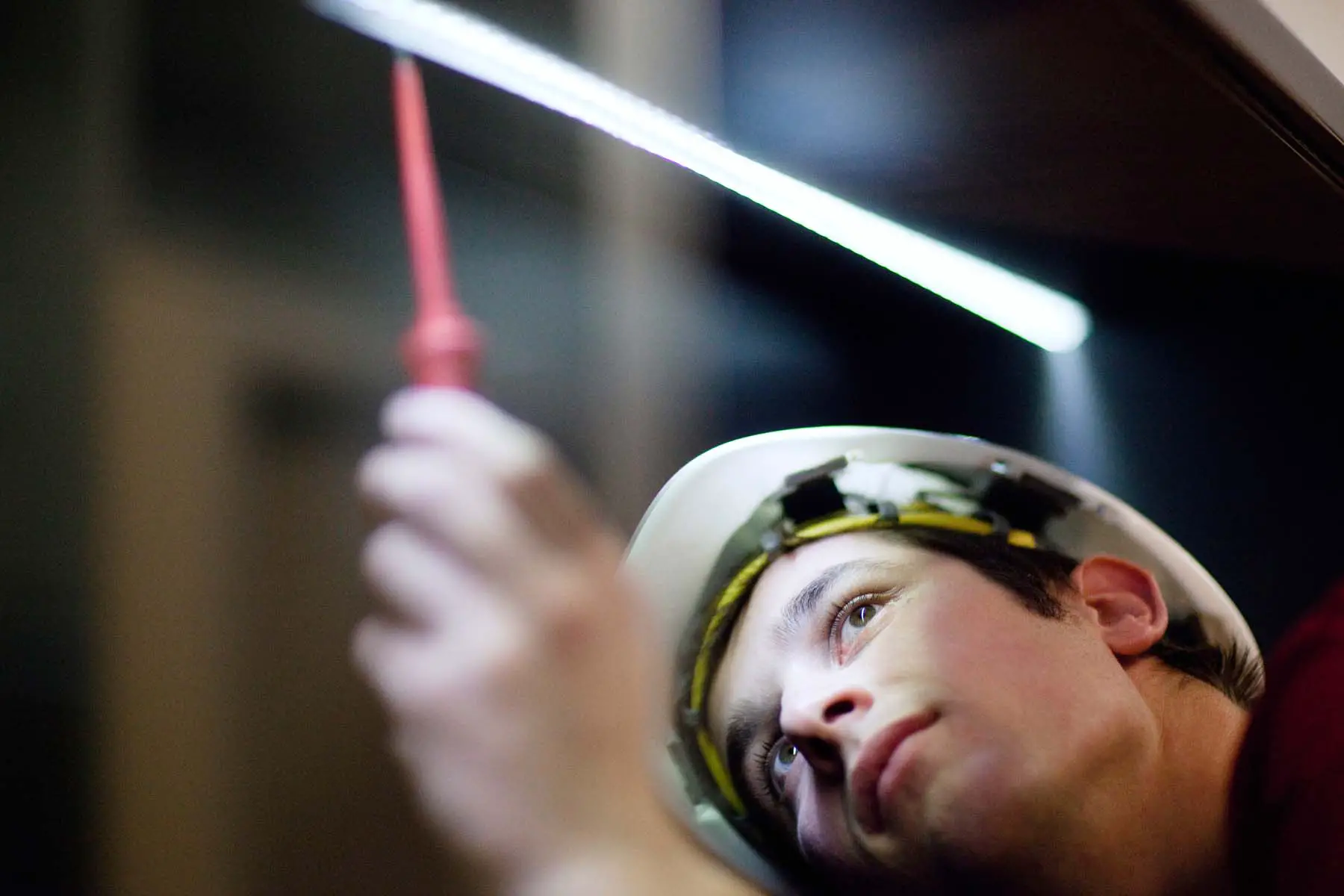
Students can gain qualifications in a wide range of careers, from nursing and electrical engineering to computer science and hospitality management. Berefsschulen can be public or private and include the following types:
- Dual system schools – mostly state-funded, providing a combination of technical education and a trade apprenticeship usually for 2–3 years.
- Full-time vocational schools (Berufsfachschulen) – also mostly state-funded, similar to dual system schools but focused solely on academic learning.
- Specialized upper secondary schools (Fachoberschulen) – two-year upper secondary schools preparing for entrance to universities of applied sciences.
- Trade and technical schools (Fachschulen) – more specialized schools that offer continued learning lasting 1-3 years, usually following on from upper secondary education and leading to a professional qualification.
- Vocational extension schools (Berufsaufbauschulen) – schools that offer intermediate-level qualifications for those who have completed basic vocational training or who have been employed. This qualification gets them into fachschulen.
- Schools with different courses of education (Schularten mit mehreren Bildungsgängen) – supplementary schools which are mostly private and offer vocational courses typically not on the general state secondary curriculum.
Useful resources
- Federal Ministry of Education and Research (Bundesministerium für Bildung und Forschung – BMBF) – German ministry that oversees education
- International School Search – global database to search for international schools in Germany


